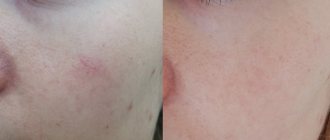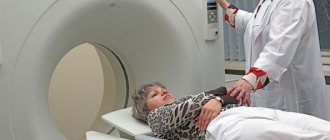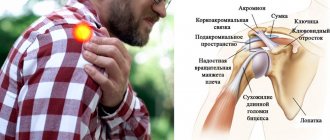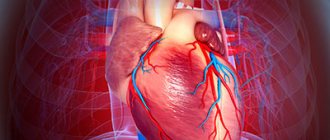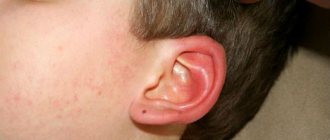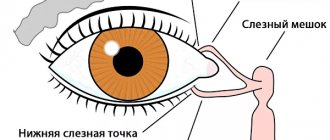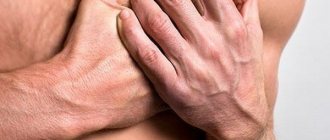Vessels are an integral part of the circulatory system. The blood flow in the body depends on their functioning. Some pathologies are characterized by rupture of blood vessels. In this case, spontaneous hematomas may appear. They occur either due to injury or due to internal disorders.
You need to understand that at the first manifestations of such a problem you should immediately consult a doctor. In a healthy person, blood vessels may occasionally burst under the influence of certain factors. However, this phenomenon is infrequent and manifests itself only as bruises. If hematomas occur constantly due to unknown reasons, then you need to visit a doctor. A phlebologist treats such problems.
Causes
Many people are interested in what a burst blood vessel on the hand looks like. This process manifests itself as bruises. Fragility of the bloodstream is most often observed in old age. This is due to the accumulation of salts, cholesterol and lipids. Accordingly, the vessels wear out, their functionality begins to deteriorate, and problems with elasticity appear. It is important to consult a doctor immediately when the first symptoms occur, otherwise you may wait for unpleasant consequences to develop.
Many people wonder how to deal with the fact that a blood vessel in their hand has burst. The causes are the most important factor that influences further treatment. There are external and internal provoking conditions.
The first is the following list:
- excessive loads;
- ingestion of chemicals into the body;
- thermal effects;
- injuries;
- allergies to cosmetics;
- taking medications that affect the condition of blood vessels;
- prolonged stress;
- sedentary lifestyle.
Internal reasons include:
- endocrine system disorders;
- kidney and liver problems;
- elderly age;
- high blood pressure that occurs too often;
- stress;
- hormonal imbalance (or taking hormonal medications);
- HIV;
- infections that affect the condition of blood vessels;
- allergies to medications;
- lupus erythematosus;
- excess weight;
- oncology;
- avitaminosis;
- constant pressure surges;
- problems with blood circulation in the brain.
Fragile capillaries as a symptom of a serious illness
The health of the vascular system and the condition of arteries, veins and capillaries are negatively affected by pathologies of the endocrine system (thyroid gland), accompanied by hormonal surges. In patients suffering from diabetes, blood vessels burst very often. The problem can also arise with kidney pathologies and vegetative-vascular disorders.
One of the most common pathological causes of fragility of blood vessels is arterial hypertension, with the progression of which the walls of the capillaries are significantly weakened and cannot cope with the load that occurs during sudden surges in blood pressure.
Symptoms
If a person’s blood vessels burst on his hands and bruises appear, then he should pay attention to his condition as a whole. Bleeding from the nose can often be a concern. If a similar problem is observed in the warm season, then cyanosis of the skin occurs and a feeling of chills appears.
For any patient, a hot day will bring only trials. The patient complains of dizziness, pain in blood vessels, aches, tachycardia and loss of consciousness. There may be problems with the vestibular apparatus. Spider veins can be seen on the skin. They appear due to the fact that the capillaries rupture.\
If a person develops subcutaneous hematomas on his hands, he should immediately consult a doctor. He will be able to prescribe effective treatment.
Bleeding from varicose veins - what is it?
One of the most dramatic incidents that can occur in patients with varicose veins is an episode of spontaneous high-pressure bleeding from a vein of the lower extremity. When most people think of bleeding, the first thought that comes to mind is bright red blood oozing or spurting from the body. Such bleeding cannot but attract attention. This often causes panic reactions in patients, which can lead to tragic consequences.
Bleeding from varicose veins on the leg
Venous bleeding can occur both from varicose veins and spider veins; the reticular vein bleeds quite often. Bleeding from a reticular vein can be just as dangerous as bleeding from a varicose vein. Another form of bleeding that can occur (especially with spider veins) is intradermal bleeding. In this situation, the spider vein ruptures beneath (or within) the surface of the skin, creating a blue-purple bruise that is visible through the skin. “Bleeding” in this situation is usually moderate since the flow of blood is prevented by interstitial pressure. But this situation is a good reason to check your veins.
Diagnostic methods
In order to select competent therapy, it is necessary to perform all diagnostic measures. This stage is considered quite important. Let's look at the most effective tests:
- You need to take a rubber band and tie it above the elbow. After five minutes it needs to be removed. If a bruise appears, then urgent treatment should be started.
- If there are problems with blood vessels, gentle blows to the chest with a hammer will cause hematomas.
- The pinch method is the most commonly used. Near the collarbone, you need to gather the skin into a fold, turn it 90 degrees and squeeze a little. If the patient does not have problems with blood vessels, then a bruise will not appear.
Those patients who have weak capillaries are advised to take additional blood and urine tests. It is especially important to check for a coagulogram. ECG and capillaroscopy will not be superfluous. Thanks to them, you can understand how well blood moves through the vessels. Thanks to modern technologies, it will be possible to identify the condition of each capillary separately.
Treatment methods
If the cause of vascular rupture is injury, then urgent action is not necessary. The bleeding will stop over time. The main thing is to provide emergency assistance correctly.
If blood vessels on the wrist or other part of the hand burst due to exposure to chemicals, you need to reduce the effect of the latter on the body. Personal protective equipment should be used to allow the capillaries to recover. With prolonged exposure to such substances, the vessels begin to thin out and become brittle.
Massage and hardening should be included in the therapeutic course. You need to give up all bad habits. The doctor is also required to prescribe medications and vitamins. Treatment should be aimed not only at eliminating the root cause, but also at strengthening the walls of blood vessels. The patient's diet plays an important role here.
What is the danger of bleeding from varicose veins?
The veins closest to the surface of the skin are prone to bleeding. If left untreated, varicose veins contribute to a higher than normal risk of bleeding or spontaneous rupture. Over time, varicose veins become larger and the vein wall becomes weaker and stretched. In these thinned veins, the blood is under high pressure (due to venous reflux or "backflow" and blood pooling in these veins). As a result, this increased pressure can lead to spontaneous rupture of veins and severe bleeding. Because of the increased pressure, they bleed, just like arterial bleeding, and patients describe the bleeding as "blood running around the room." Blood loss when bleeding from varicose veins occurs can be significant, since the blood often flows out under high pressure. Local pressure with the fingers along with lifting the legs, applying a pressure gauze bandage, and adopting a horizontal body position are the first measures indicated to stop venous bleeding. After this, you must immediately call an ambulance. However, it is very difficult for an elderly person to perform these maneuvers independently and call for help. For this reason, it is not surprising that blood loss from variceal bleeding can be significant. Finally, an episode that occurs while a person is sleeping can be especially dangerous because the bleeding is painless and the patient is often unaware that they are losing blood.
Diet
Any person will be able to notice that a blood vessel on his hand has burst. What to do? In addition to medical treatment, you must follow a diet. You need to add more vitamins to your diet. You should eat chicken, rabbit, and cow meat. Fish also has a good effect on the body. You should enrich your diet with vegetables and fruits as much as possible. Nuts and legumes won't hurt. Fermented milk products also have a good effect.
Pickled vegetables, flour, bread, smoked foods, alcohol, coffee and soda are prohibited.
Medicines
The doctor will prescribe medications that relieve swelling and inflammation of blood vessels. An excellent remedy is “Suprastin”. It allows you to get rid of capillary fragility if it is the result of an allergy. “Enap” and “Captopril” are used for high blood pressure, which has affected the condition of the blood vessels. “Troxevasin” is necessary for all patients, regardless of why a blood vessel burst on a finger or in another place. It will strengthen the walls of the capillaries.
Sometimes doctors use instrumental treatment methods. Laser and pulsed light are used. Microsclerotherapy is also effective. If the case is too complex and is not corrected with medications, then doctors may prescribe surgery, during which the vessel will be removed.
How to prevent bleeding from varicose veins
Correct and modern examination and timely treatment of venous bleeding is not as difficult as it seems to many patients. If bleeding from varicose veins occurs, local hemostasis is recommended, sometimes with a doctor suturing the vein, as re-bleeding may recur in some cases if only local pressure is applied. After the bleeding has stopped, a modern examination of the venous system of the lower extremities is necessary, a good assessment of the anatomy of the patient's venous vessels using ultrasound. Determination of the exact anatomy and blood flow patterns in the deep, superficial, and perforator veins of the affected leg is necessary. It is required that at least part of the examination be performed with the patient standing. This type of examination in public medical institutions is usually performed only while lying down, which does not allow adequate assessment of venous blood flow in the veins of the lower extremities.
Mandatory ultrasound of veins if there is a history of bleeding from varicose veins
At the Moscow Phlebology Center, all ultrasound scans are performed with the patient in an upright position, which eliminates diagnostic errors. After the results of the ultrasound examination become known, a tactical treatment plan is formed. At the Moscow Phlebology Center we use various methods for treating varicose veins. These are laser and radiofrequency thermal obliteration, mini-, microphlebectomy, laser coagulation of varicose veins, scleroobliteration of varicose veins, non-tumescent methods of treating varicose veins. We use all these techniques in various combinations. Which treatment regimen is right for you will be determined only after consulting a specialist.
The only relevant treatment for bleeding from varicose veins today is the elimination of the leading pathology, namely varicose veins. This normalizes pathologically altered pressure in the venous system and bleeding from varicose veins will no longer occur. The best treatment for bleeding in varicose veins is its prevention by timely and high-quality elimination of the pathology that causes it, varicose veins. Modern European phlebologists are unanimous in their opinion that varicose veins must be treated before complications arise. A good phlebologist can treat any manifestations of varicose veins, and the best one will prevent the development of these complications long before they appear. The approach to this problem of the Moscow Innovative Phlebological Center does not differ from the approach in the best European clinics. We try to treat varicose veins long before complications appear.
Traditional methods
Some traditional medicine methods can help if burst blood vessels appear on your hands.
Garlic is the most popular remedy. You should eat 2 cloves per day. Then the vessels will become strong and elastic. You can also use any decoctions of lemon juice, black currant, rowan, rose hips, and walnuts. All of them are enriched with a large amount of vitamins, which has a great effect on the condition of a person and his blood vessels individually. However, you need to remember that some drugs have contraindications. Before using this or that decoction, you should consult your doctor.
About prevention
If you are one of those patients who suffer from fragile blood vessels, first of all you should abandon the idea of self-medication and consult a doctor. The specialist will prescribe a comprehensive examination, determine the cause of the weakness of the capillaries and arteries, and prescribe treatment that will prevent the development of serious vascular complications.
In addition to medications and physiotherapeutic procedures, it is extremely important to follow simple preventive measures to maintain vascular health. You need to start by adjusting your own diet:
- consume citrus fruits whenever possible;
- replace sweets and flour with currants, raspberries, apricots, cherries and chokeberries;
- among vegetables for vessels, parsley and tomatoes are especially useful;
- Buckwheat is a useful product for improving the condition of capillaries, veins and arteries.
For preventive purposes, patients are recommended to harden themselves. At least once a week you should take a contrast shower - this is a tonic exercise for the circulatory system, which has a great effect on blood flow. If the blood vessels are abnormally fragile, you cannot harden them. Otherwise, you can provoke a more serious hemorrhage. If you have any problems with blood vessels, you need to quit smoking and drinking alcohol.
Gel “Badyaga Forte”
This drug helps fight bruises and hematomas. Therefore, if an unpleasant stain appears in the most visible place due to burst blood vessels, you can remove it using this product.
The main “ingredient” of the gel is badyaga. This is a freshwater sponge. It is caught in reservoirs. As a rule, it accumulates on snags and stones. It is dried and then ground into powder. This gel, when applied to the skin, causes surface irritation. Because of this, the vessels dilate and begin to move blood faster. The product also has a resolving and bactericidal effect.
What to do if bleeding from varicose veins occurs
An episode of bleeding from varicose veins, especially if it happens for the first time, is always stressful. It is very important not to panic. It is necessary to apply a pressure bandage tightly and take a horizontal position.
First aid for bleeding from varicose veins
Call an ambulance immediately. When all necessary measures have been taken and the bleeding has stopped, you need to think about preventing bleeding from varicose veins. To do this, you need to seek professional help. Today, all issues related to varicose veins, including venous bleeding, are dealt with by phlebologists. A good specialist can be found in a multidisciplinary private clinic or a specialized phlebological center.
What effect does the gel have?
The instructions for the drug describe the effect that the use of the gel leads to. It will be an excellent method for combating bruises due to burst blood vessels. Hematomas on the hands are easy to hide, but sometimes they can cause severe pain. The gel will be able to eliminate it. It also relieves itching. It is able to enhance the properties of the immune system, normalize blood circulation, which is important, restore the skin, and combat the active work of the sebaceous glands. The gel can also be used when exfoliating surfaces, as it tones and regenerates them.
Many people use the described remedy for swelling. The gel can also warm up the skin. Due to the fact that it contains essential oils, the drug fights dead cells. You can use the gel for rejuvenation, but keeping it on for more than 20 minutes is not recommended.
Immediate causes leading to bleeding from varicose veins
One common scenario that causes varicose veins to bleed is shaving your legs. When a sharp razor is drawn across the surface of the skin, any small bumps or bumps on the skin can be cut by the sharp edge of the blade. The skin over varicose veins is often stretched, thin and weak. This makes these areas especially vulnerable to bleeding when shaving. Interestingly, medium-sized veins (reticular, 1-3 mm in diameter) are the most torn. Damage to skin veins from shaving your legs is one reason why the bathroom is a common place where varicose veins bleed.
The cause of bleeding from a varicose vein
There are several other reasons why varicose veins may bleed. One of the common causes of bleeding from varicose veins is local trauma or damage to the skin. Direct trauma to the vein can cause bleeding. Cutaneous veins are surprisingly easy to damage. Here are some other scenarios that lead to vein damage and venous bleeding:
- Accidentally kicking a household appliance
- Violent scratching of the skin in the area of the varicose vein (for example, with the nail of the other foot)
- Furniture (or other objects) fall on your foot
- Scratch from a dog or other pet
- Injuries from trips or falls that break the skin.
Rules for using the gel
The gel should only be applied to cleansed skin. It should also be low fat. It is spread in a thin layer. In this case, you need to carry out massaging movements. After the procedure, you should not immediately go out into the sun. Before use, you need to apply a little gel to your elbow to check if there is an allergic reaction to it. If there is no burning or rash, then this remedy can be used.
You are allowed to apply the gel no more than three times per day. Rub it in until completely absorbed. You should not press too hard on the skin, otherwise it can lead to large ruptures of blood vessels or pain. After the procedure, the affected area should be warmed up. You can simply cover it with a scarf or towel. It is best not to use the product on open wounds, otherwise itching, pain and redness will occur.
Preventive measures
In order to prevent the occurrence of the described problem, you need to give up bad habits. Most often, burst blood vessels in the hands are observed in those patients who smoke. Because of tobacco, the capillaries begin to narrow, and the load on them increases. This entails a reduction in throughput. As a result, the vessels simply cannot stand it and become deformed. If the main cause of such an illness is smoking, then if therapy is performed without giving up the bad habit, it may not bring the desired effect.
Regular visits to the doctor are also considered an important preventative measure. This is especially true for older people. Most often, the fragility of blood vessels in such cases is caused by natural changes in the body. Patients who have hypertension are at risk. Anyone whose blood pressure is too high should be examined by a phlebologist at least once a year.
How to remove a bruise on a finger
If the vessels in the hands burst due to atherosclerosis, the doctor prescribes medications - Fenofibrate, Atorvastin. If there is a lack of nutrients in the body, a therapeutic diet and vitamins (Rutoside, Ascorutin) are prescribed. It is advisable to consume more foods with vitamin C - these are currants and rowan, raspberries and apricots, tomatoes, rose hips, cherries, citrus fruits and kiwi. B vitamins normalize hemodynamics and take part in hematopoiesis. Vitamin A strengthens blood vessels, vitamin E protects cell membranes.
To relieve the inflammatory process and swelling, Troxevasin is prescribed. Ointment and tablets strengthen blood vessels and prevent the formation of blood clots. You can also use other popular phlebotonics - Detralex, Phlebodia.
Angioprotective agents Aescin and Aescusan will help well. If vascular damage is caused by an allergic reaction, take antihistamines - Zyrtec, Suprastin. When the cause of burst capillaries is pressure surges, you need to monitor its level and, if necessary, take medications that normalize blood pressure. Drugs such as Lorista and Enalaril are prescribed by a doctor.
Instrumentally, the vessels are treated with laser therapy, microsclerotherapy, and photocoagulation. Only in the most severe cases are the burst vessels removed.
Physical exercise is important in the treatment of any vascular-related diseases. The fact is that physical activity pushes blood through the veins, and if a person moves little, the blood stagnates, which threatens with negative consequences. A simple way to improve blood circulation in your hands is to lie on your back, raise your hands up and shake them as if you need to shake off water. This is a vibration technique that helps improve blood circulation through the veins of not only the arms, but also the legs. Repeating this simple shaking for 10 minutes every day can improve the health of your veins and reduce the likelihood of pathologies. It's a good idea to add a full body massage to the shake-up. Carry out the procedure once every six months. For prevention, you can massage your legs and arms yourself to stimulate blood flow and strengthen blood vessels.
Results
If a person notices burst blood vessels on his hands, he should immediately contact a medical facility. You should not ignore the symptoms of fragility and fragility of capillaries. If a person is immediately diagnosed and treated, his chances of recovery will be high. If you ignore therapy, you can wait for serious complications to arise, which in the future can lead to surgery or death.
To quickly get rid of hematomas, you can use the above-described gel created on the basis of badyagi. It will dilate blood vessels, eliminate blood stagnation and relieve the problem for a short period of time. However, this does not mean that you do not need to see a doctor. The sooner the patient begins treatment, the sooner the disease will be eliminated.
Preventive measures should be observed. It must be remembered that the problem is easier to prevent than to cure.
Frequently asked questions from patients about bleeding from varicose veins
How dangerous is bleeding from varicose veins?
Bleeding from varicose veins is always an unexpected situation; blood comes out of the vein under high pressure, which can lead to significant blood loss, and patient panic is quite likely. Therefore, bleeding from varicose veins can become not only dangerous, but also a life-threatening situation.
How to prevent bleeding from varicose veins?
In order to prevent bleeding from varicose veins, you need to periodically undergo a basic examination by a phlebologist with duplex ultrasound scanning of the veins of the lower extremities. Based on the results of the study, follow the doctor’s recommendations.
What to do if there is bleeding from varicose veins?
If bleeding from varicose veins occurs, do the following:
- Create local pressure in the area of bleeding using a gauze pad and finger pressure.
- Take a horizontal position.
- Raise your leg above heart level.
These measures can effectively stop venous bleeding in most cases. Of course, after this you need to seek specialized medical help.
Where is the best place to treat bleeding from varicose veins?
Bleeding from varicose veins, as well as the varicose veins that provoked it, are best treated in specialized centers specializing in the treatment of venous pathology.
